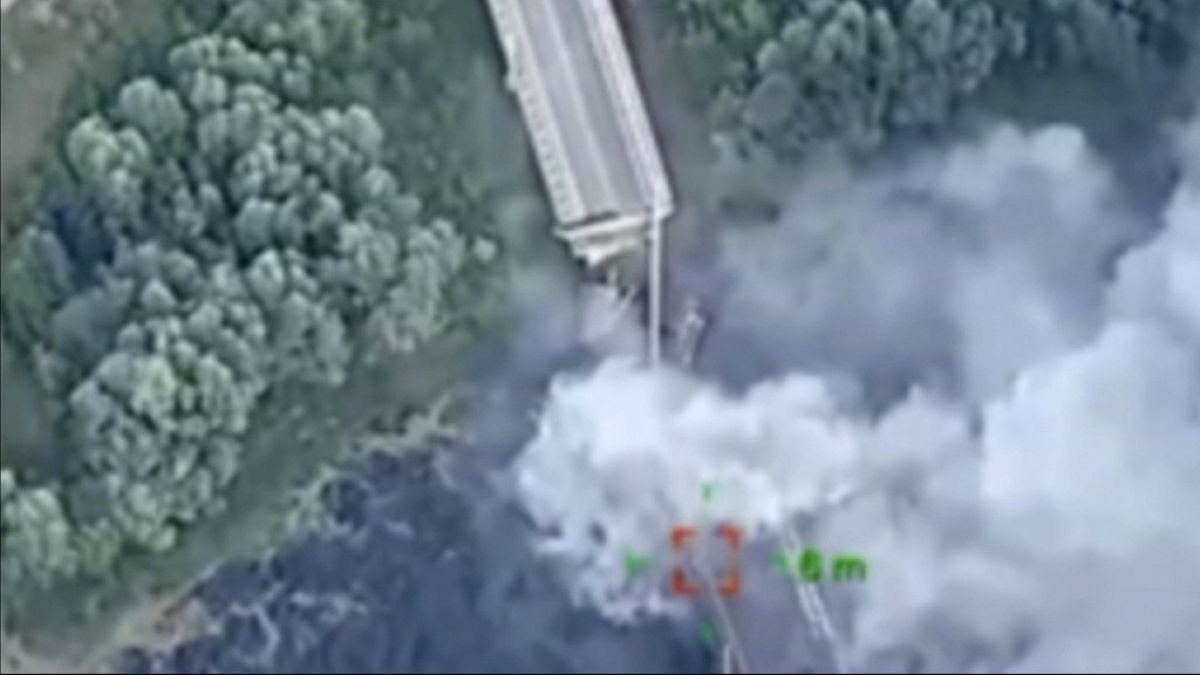San Diego, CA
Survey of nature’s superhero, eelgrass, kicks off Carlsbad bridge project

Two researchers in an inflatable boat glided out onto Batiquitos Lagoon in Carlsbad Thursday morning looking for eelgrass, an underwater plant that provides a nursery for fish, crabs, shrimp and other sealife.
The boaters, equipped with sonar and diving gear, also were looking for any sign of Caulerpa, an invasive seaweed that can spread rapidly and choke out the native eelgrass. Nicknamed “killer algae,” Caulerpa taxifolia turned up in Carlsbad’s nearby Agua Hedionda Lagoon in 2000 and was eliminated only after an intensive, multi-year, $7 million battle.
Since then, the invader, which may have been dumped from a home aquarium, has been absent along the North County coastline. However, last year, small amounts of a slightly different but equally destructive species, Caulerpa prolifica, were found in San Diego Bay and efforts are underway to eradicate it.
The one-day Carlsbad survey are part of the preparations for replacing the 80-year-old wooden railroad trestle that crosses the lagoon. Construction is expected to begin this fall and be completed in 2028 at a cost of about $165 million. State law requires construction to pause from April 15 to July 31 each year during the California least tern nesting season.
A survey in 2015 showed several dense beds of eelgrass spread between a few sparse areas in the lagoon, said Derek Langsford, an environmental compliance consultant working with the San Diego Association of Governments.
Eelgrass is considered one of nature’s superheroes. One of many species of seagrasses, its long, slippery blades offer shade and camouflage for young fish. Eelgrass anchors shorelines and provides food and habitat for a variety of marine life.
Growth of the perennial plant varies from year to year depending on the weather, rainfall and other factors.
“We’ve had two relatively wet winters,” Langsford said. “That brings more freshwater flowing through the channel of the lagoon. Eelgrass does not like freshwater.”
Storm runoff also brings silt and sediment, which cloud the water and prevent light from reaching the plant for the photosynthesis it needs to survive.
“These lagoons are very sensitive, and they support a bunch of endangered species,” said Sue Scatolini, a biologist at the California Department of Transportation, or CalTrans. “Salt marsh and lagoon habitats are very important.”
More than 200 species of birds have been seen at the lagoon, including the endangered California least tern and the western snowy plover. The shallow water is a breeding ground for biologically and commercially important ocean fish such as halibut and sculpin.
Nelvin C. Cepeda / The San Diego Union-Tribune
Daniel Conley, a senior marine biologist at Tierra Data, and Emily Gardner, an associate marine biologist, head out on the Batiquitos Lagoon to map the sea floor. (Nelvin C. Cepeda / The San Diego Union-Tribune)
Other than eelgrass, there’s not a lot of vegetation in the lagoon, Scatoline said. Most of the bottom is shallow and sandy, much of it only knee deep at low tide. The deepest part is the channel under the bridge, where the bottom is scoured by the current.
Eelgrass is a flowering underwater plant, not seaweed, that grows in areas from the tidal zone down to about 20 feet deep.
Native Americans collected it for food, roofing, basket weaving, smoking deer meat and as a cure for diarrhea. Early California settlers used it to thatch their roofs, as well as for fuel, bedding and a soil conditioner.
Industries have used eelgrass to make paper, cigars, upholstery and packing materials. However, today state law prohibits its commercial or recreational harvest, according to the state Department of Fish and Wildlife.
SANDAG, which oversees the bridge replacement project, will be required to replace any eelgrass that the survey finds growing in the area affected by construction. Should any Caulerpa be discovered, construction could be delayed until the invasive plant is removed.
“We don’t think we will encounter any Caulerpa here,” said Tim Pesce, a senior environmental planner for SANDAG.
The old, single-track railroad bridge is being replaced with a double-track concrete bridge that brings numerous environmental and operational benefits.
The new bridge will be longer with less of a footprint in the water, which will improve tidal flows and water quality in the lagoon. Instead of standing on more than 100 closely spaced wooden posts or piers in the water, the new structure will be supported by concrete piers set 56 feet apart.
Another benefit will be the excavation of about 40,000 cubic yards of sand, Pesce said. The sand will be used to replenish nearby South Ponto Beach and to expand an eroding least tern nesting area near the mouth of the lagoon.
As for operational benefits, a second set of tracks improves the speed and efficiency of service by allowing trains to pass each other.
So far SANDAG has double-tracked about three quarters of the 60-mile corridor from downtown San Diego to the Orange County border. The Batiquitos bridge project will add more than half a mile of double-track, eliminating a bottleneck between Carlsbad and Encinitas.
The bridge project strengthens an important link in the 351-mile Los Angeles-San Diego-San Luis Obispo, or LOSSAN, rail corridor.
The LOSSAN corridor is San Diego County’s only passenger and freight train connection with Los Angeles and the rest of the United States. It’s also part of the federal Strategic Rail Corridor Network connecting military bases across the country.
Locally, the corridor is used daily by North County Transit District’s Coaster commuter trains, Amtrak passenger service, and BNSF Freight.
Amtrak’s Pacific Surfliner makes 13 daily round-trips between San Diego and Los Angles. The Coaster makes 15 daily round-trips between Oceanside and San Diego on Mondays through Thursdays, 16 on Fridays, 11 on Saturdays and nine on Sundays.
Originally Published:

San Diego, CA
These Padres can sit stars and still win big

On Saturday night, San Diego played
San Diego, CA
San Diego mayor heads to Nev. to campaign for Kamala Harris

SAN DIEGO (FOX 5/KUSI) — According to Todd Gloria’s office, the San Diego mayor is traveling to the state of Nevada Saturday to campaign for democratic presidential candidate Kamala Harris.
A press release announcing his departure noted that Gloria is making the trip to participate in the the Harris campaign’s “Weekend of Action.”
This event is meant to kick off the Democratic National Convention, which is scheduled to be held Aug. 19 through 22 at the United Center in Chicago, Illinois.
The “Weekend of Action” is taking place across battleground states with organizers, grassroots supporters, and others attending to voice their support for their preferred candidate.

According to the mayor’s office, Gloria will depart for Nevada Saturday afternoon and is expected to return to San Diego sometime during the night. Then on Sunday, he will travel to Chicago to take part in the Democratic National Convention as a delegate for Harris.
Copyright 2024 Nexstar Media, Inc. All rights reserved. This material may not be published, broadcast, rewritten, or redistributed.
For the latest news, weather, sports, and streaming video, head to FOX 5 San Diego & KUSI News.
San Diego, CA
Snorkelers found a rare deep-sea fish off La Jolla. It took ‘a community effort’ to haul it to shore to study.

Emily Miller and her friends had planned for a relaxing day of kayaking in La Jolla last weekend — a reunion of sorts for the former roommates.
But when they reached La Jolla Cove, the kayakers — most of whom are also marine researchers — found themselves with a bit of a “fish emergency” on their hands, Miller said.
Nearby snorkelers had found a roughly 12-foot dead oarfish, a rare species of deep-sea fish, lying in the seagrass at the cove. This discovery last Saturday was significant; fewer than two dozen oarfish have washed up in California since 1901, according to the Scripps Institution of Oceanography.
The oarfish, which can grow to be around 30 feet long, is often described as a sea serpent and has a reputation as a predictor of natural disasters such as earthquakes and tsunamis, though this myth was debunked years ago.
While the snorkelers examined the unique fish, Miller — a research associate at California Sea Grant and a former commercial fisheries observer — knew that such a rare species washing up in San Diego likely warranted closer scientific analysis. In a lab, scientists can analyze the fish’s gills and body composition to better understand its lifestyle as well as its relationship with the rest of the ocean.
“I jumped in the water and … pushed it up to the surface to get a better look,” she said.
With her friends supporting the fish, Miller threw herself over her kayak, half in the water, and began making some calls — including one to Ben Frable, the collection manager of fishes at Scripps Institution of Oceanography, who helped her notify the NOAA Southwest Fisheries Science Center and local lifeguards.
After determining that the fish could be removed from the marine protected area, it was decided that the kayakers would bring the fish back to shore with them — an effort more easily said than done.
“Our small group had the mission of getting this unwieldy animal to the kayak launch,” Miller said. They struggled to orient the fish onto the kayaks, not wanting to damage the specimen, still mostly intact.
They had all but resigned themselves to swimming back to shore with their heavy haul when two passing paddleboarders offered to help. Their board was an ideal flat surface for carrying the ribbon-like oarfish.
“It was a community effort to get a rare specimen to scientists — and taking all the steps to make sure all the appropriate authorities were contacted,” Miller said. “It was a beautiful example of teamwork.”

The adult male oarfish has spent the last week at the NOAA Southwest Fisheries Science Center. On Friday, scientists conducted a necropsy to determine a cause of death.
It still wasn’t clear why the fish died. There was no evidence of trauma. But the researchers also took gill and genetic samples, along with muscle samples, which can show what kinds of isotopes are stored in the body.
“They’re not like an apex predator … like a tuna or a shark or a dolphin,” Frable explained. “But knowing where they are in this food web, especially here in California, can help us really fill out our understanding of how these kinds of things, like carbon and nitrogen, cycle in the open ocean off the coast.”
After the necropsy, Frable will preserve the fish at the Scripps Marine Vertebrate Collection, where there are six other oarfish, along with the body parts of a few others.
Oarfish live in the deep sea and can be found at depths of as great as 3,000 feet, though it’s more common for them to live around 600 feet below the surface.
It’s rare for them to wash up in California. But Southern California can be a “lucky spot” to see deep-sea fish in general, Frable said, given its proximity to many underwater canyons that make for deep-sea conditions much closer to the shore.
This fish didn’t appear to have been scavenged by other marine animals, such as sea lions or sharks, he points out — a finding that aligns with some other oarfish that have washed up. “It may just be that their skin’s a little too tough and not worth it, or maybe they just don’t taste good,” he speculates, though more research is needed on the subject.
“It’s one of these great examples of all these different things that we still don’t really know about these organisms,” Frable said. “And one of the reasons why, when we get to encounter them like this, there’s so much we can learn.”
Originally Published:
-

 Ohio4 days ago
Ohio4 days agoOhio taxpayers sent families $966 million for private school tuition: Capitol Letter
-

 World5 days ago
World5 days agoWhat could an EU Commissioner do to tackle the housing crisis?
-

 News1 week ago
News1 week agoNewly released video shows chaos and confusion after Trump assassination attempt
-

 Politics1 week ago
Politics1 week agoTrump says Biden had the 'right to run,' but Dem Party 'took it away'
-

 Politics1 week ago
Politics1 week agoTim Walz 'misspoke' about using weapons ‘in war,' Harris campaign says: report
-

 World1 week ago
World1 week ago‘Islamophobic, alarmist’: How some India outlets covered Bangladesh crisis
-

 Politics1 week ago
Politics1 week agoProgressive women's groups silent on second gentleman Doug Emhoff's affair
-

 Politics1 week ago
Politics1 week agoTrump campaign frames election is 'complete contrast' against Harris record



















